Rayman Jungle Run
 After playing Rayman Origins earlier this year, I was eager for more Rayman run-and-jump. Not long afterwards, Rayman Legends details started leaking out at E3, and the salivating began. Unfortunately for me, Legends looks to be a Wii U exclusive, and I'll probably have to miss out on Wii U at launch.
After playing Rayman Origins earlier this year, I was eager for more Rayman run-and-jump. Not long afterwards, Rayman Legends details started leaking out at E3, and the salivating began. Unfortunately for me, Legends looks to be a Wii U exclusive, and I'll probably have to miss out on Wii U at launch.
So I'll probably have to wait a while for the next big Rayman platforming adventure. But Rayman Jungle Run on my Android phone is a decent consolation prize.
In brief, it's the aesthetics and mechanics of Rayman Origins applied to Canabalt-style auto-running. Rayman charges through gorgeous hand-drawn environments, racing towards the goal and collecting Lums in thirty second stages. Its smartphone-simple design means Jungle Run sacrifices some of the creativity, variety, and exploration of Origins, but it's got a few advantages of its own.
Jetpack Joyride
 I read a complaint recently that most Android and iOS action games are just glorified quick time events, touching the screen at the right time to jump or fly or shoot. This is almost certainly true for a game like Temple Run, where your character auto-runs and you quickly flick the screen to react to obstacles and collect more coins. The same could probably also be said for Jetpack Joyride, where the game’s single input turns your character’s jetpack on, releasing turns it off. To some people, this isn’t compelling gaming at all, and I understand that, but for whatever reason, I get hooked on these little games with simple short term objectives but no real long term goals.
I read a complaint recently that most Android and iOS action games are just glorified quick time events, touching the screen at the right time to jump or fly or shoot. This is almost certainly true for a game like Temple Run, where your character auto-runs and you quickly flick the screen to react to obstacles and collect more coins. The same could probably also be said for Jetpack Joyride, where the game’s single input turns your character’s jetpack on, releasing turns it off. To some people, this isn’t compelling gaming at all, and I understand that, but for whatever reason, I get hooked on these little games with simple short term objectives but no real long term goals.
What do you do in Jetpack Joyride? Fly as far as you can? Yeah, I guess that’s maybe the point. Collect coins to buy more things? That’s always fun, sure. Complete objectives and achievements? Sometimes a nice diversion, okay. Now that you’ve done all those things for hours, are you any closer to “beating” the game? Probably not.
Someone more pessimistic than me may suggest the real point of the game is to bewitch you with expensive in-game upgrades to trick you into spending real money on fake coins to make a tidy profit. This is certainly a possibility, heck, app development usually isn’t very altruistic, but if I can have a fun without spending money, have I beaten the system, or simply enjoyed a video game?
Tales of Monkey Island: Rise of the Pirate God
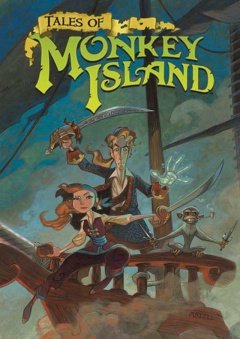 As the first Monkey Island game in nine years, fans had high expectations for Tales of Monkey Island. Not only is the series one of those coveted, highly nostalgialized, fan favorites from our youth, but the last game, Escape from Monkey Island, simply wasn’t that good. There were a lot of questions whether Guybrush Threepwood is even funny in three dimensions as it had been tried and failed once already.
As the first Monkey Island game in nine years, fans had high expectations for Tales of Monkey Island. Not only is the series one of those coveted, highly nostalgialized, fan favorites from our youth, but the last game, Escape from Monkey Island, simply wasn’t that good. There were a lot of questions whether Guybrush Threepwood is even funny in three dimensions as it had been tried and failed once already.
I certainly had my doubts, I had never played an episodic game before Tales of Monkey Island, so even the delivery method was questionable. I know that TellTale Games has had great success with season gaming, but would it work with Monkey Island? Would the episodes be too long? Too short? Too reliant on cliffhangers? Could a writing staff still capture Guybrush, Elaine, and Chuck?
Five episodes later, I have my definitive answer to all of these questions. Rise of the Pirate God serves as not only the finale for the season, but once again, could be the final chapter in Monkey Island’s 20 year history. Let’s talk first about the episode, and then the series as a whole.
The Last Story
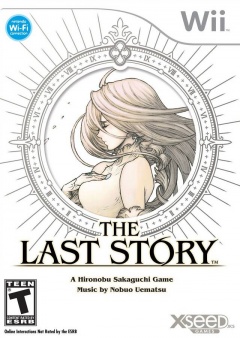 There’s a narrow alley tucked into a corner of the industrial castle
town, hidden behind the bustling Arena Square. Armorsmiths and
swordcrafts crowd the path, talking shop and hawking wares to passersby
in a gaunt corridor of tiny workrooms. In the alley’s only empty corner,
a lean brute presses an elderly shopkeep against the grimy concrete and
slyly demands a cut of profit.
There’s a narrow alley tucked into a corner of the industrial castle
town, hidden behind the bustling Arena Square. Armorsmiths and
swordcrafts crowd the path, talking shop and hawking wares to passersby
in a gaunt corridor of tiny workrooms. In the alley’s only empty corner,
a lean brute presses an elderly shopkeep against the grimy concrete and
slyly demands a cut of profit.
It’s a place foul with sweat and industry. It swelters with forge and struggle. A stroll from end to end offers a glimpse of the desperation that is life for these lower class tradesman. They fight for survival, crammed into a corner of the last thriving city on the last prospering island in a rotting world.
The locals call this slum strip Artisan’s Way. It has an effortless narrative density that's so refreshing to see in a JRPG. The Last Story could have been about this place. It’s not. The Last Story is about a vampiric meteor that shoots giant lasers.
Saints Row: The Third
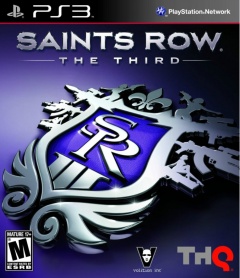 Saints Row 2 was already over the top. After an epic prison bust you then shoot up a courthouse and spray poop on rich people’s homes. It was crazy and pretty fun, and seemed worth playing beyond the first hour just to see what the developers could cook up.
Saints Row 2 was already over the top. After an epic prison bust you then shoot up a courthouse and spray poop on rich people’s homes. It was crazy and pretty fun, and seemed worth playing beyond the first hour just to see what the developers could cook up.
Volition wanted to go bigger though, so they made Saints Row: The Third. Within days of release, the game was already famous for one of its weapons: The Penetrator, a giant purple dildo with realistic... dildo physics. But from my time with the game, I can promise you they really went to town with an adrenaline-pumping, action set-piece heavy first hour that simply blows the offerings Saints Row 2 put up.
So let’s take a look at the first hour of Saints Row: The Third, with this hour’s minute by minute section being sponsored by the absurdity of Volition, highlighting the crazy levels the game goes beyond even its predecessor.
Tales of Monkey Island: The Trial and Execution of Guybrush Threepwood
 After the excellent Lair of the Leviathan episode, I was totally expecting the quality to fall in back to Tales of Monkey Island’s previous levels, good comedy, but not Monkey Island comedy. Thankfully, The Trial and Execution of Guybrush Threepwood manages to sustain most of the momentum of Leviathan in a well written romp that sets out a few pretty unique puzzles for our hero.
After the excellent Lair of the Leviathan episode, I was totally expecting the quality to fall in back to Tales of Monkey Island’s previous levels, good comedy, but not Monkey Island comedy. Thankfully, The Trial and Execution of Guybrush Threepwood manages to sustain most of the momentum of Leviathan in a well written romp that sets out a few pretty unique puzzles for our hero.
So far I’ve really been enjoying Tales of Monkey Island, it isn’t as good as the first three games in the series, but is really well done as an episodic adventure. Breaking out the island hopping into their own chapter has always fit well with Monkey Island, and allows the writers to create more natural cliffhangers and mini-conclusions.
The Trial and Execution of Guybrush Threepwood features a few of its own surprises, which I’ll definitely spoil in the following few paragraphs, if you’re reading this far I guess I’m assuming you’ve either already played the season or don’t care about spoilers at this point.
Borderlands 2
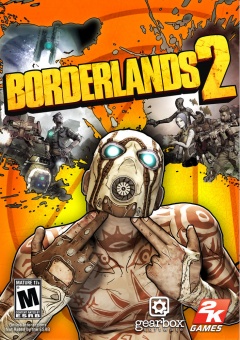 The original Borderlands was a breakout hit for Gearbox Software in 2009. The cel-shaded mission-driven FPS-meets-Diablo-style super-hyphenated lootfest was a quirky and endearing departure from more serious franchises like Halo, Call of Duty, and Medal of Honor. Instead of pushing the same "OMG 40 modes of multiplayer!" angle that had gotten so popular, it chose to design around the concept of 4 player co-op gameplay. And it did so with relish.
The original Borderlands was a breakout hit for Gearbox Software in 2009. The cel-shaded mission-driven FPS-meets-Diablo-style super-hyphenated lootfest was a quirky and endearing departure from more serious franchises like Halo, Call of Duty, and Medal of Honor. Instead of pushing the same "OMG 40 modes of multiplayer!" angle that had gotten so popular, it chose to design around the concept of 4 player co-op gameplay. And it did so with relish.
With the success of Borderlands, Gearbox was able to move beyond porting other studios games and their now languishing Brothers in Arms property. Instead of working on others titles, they had a verifiable sales behemoth of their own making. But with great power comes great responsibility. Games like Borderlands often struggle because harried gamers don't give them a chance. In a retail sea awash with sequels and spinoffs, new IPs often struggle to gain traction. Because of this, those gamers who do latch onto a new piece of software, often feel entitled. Afterall, they took a chance on an unknown, thus contributing to its success. These types of fans are a double edged sword. They are often some of the most vocal in supporting a game and getting the word out. But they are also frequently among the hardest to please with sequels, as the developers try to thread the needle of offering new and interesting content, while staying true to the experience of earlier games.
This is the environment that Gearbox developed Borderlands in. How does one replicate the success of a game whose popularity was so driven by its quirky uniqueness? In other words, how does one make a game that is the same, but still unique? If I had the answer... if anyone had the answer, they would most likely be very rich. It's a moving target. The question is whether Gearbox is as accurate at hitting that target as some of the guns they designed for the game. And if they are, can they relay that fact to a gamer in the first 60 minutes? Let's take a look at Borderlands 2 and find out.
Tales of Monkey Island: Lair of the Leviathan
 Finally, a hilarious, superbly written, well-rounded entry into Tales of Monkey Island. The first two episodes felt like Monkey Island on the surface, but were lacking in key areas. Lair of the Leviathan may well be the smallest scoped chapter so far, but is highly focused and downright entertaining from beginning to end.
Finally, a hilarious, superbly written, well-rounded entry into Tales of Monkey Island. The first two episodes felt like Monkey Island on the surface, but were lacking in key areas. Lair of the Leviathan may well be the smallest scoped chapter so far, but is highly focused and downright entertaining from beginning to end.
Lair of the Leviathan is the middle child of the series, and TellTale Games could have certainly phoned the it in; most gamers playing this far are probably in it for the long haul, and with an explosive ending in mind, we would have forgotten the stuff in between point A and point B. But writer Sean Vanaman brought the goods and we got a memorable treat.
As I write this, The Walking Dead series from TellTale Games is receiving rave reviews for its own third episode, and while part of me wishes I was keeping up with that series instead of diving into Tales of Monkey Island, I’m very happy to finally be playing the three year old game in one of my favorite series of all time. Better late than never.
Donkey Kong Country Returns
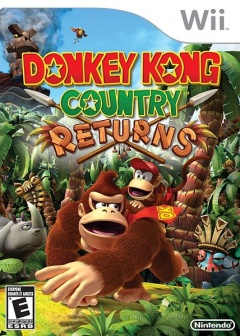 I’m not sure if we ever needed to return to Donkey Kong Country. The original series is so firmly a product of the Super Nintendo era, with its shiny, Toy Story look that is unique to Rareware, and pretty bad collision detection for a 2D platformer, I would have been okay with having rose-colored memories about my trips with DK, Diddy, and the rest of the forgotten gang.
I’m not sure if we ever needed to return to Donkey Kong Country. The original series is so firmly a product of the Super Nintendo era, with its shiny, Toy Story look that is unique to Rareware, and pretty bad collision detection for a 2D platformer, I would have been okay with having rose-colored memories about my trips with DK, Diddy, and the rest of the forgotten gang.
But Retro Studios, apparently bored with resurrecting Metroid moneybags every few years, was tasked with bringing back the old gorilla in Donkey Kong Country Returns. Surprisingly, this was not another 3D incarnation that Retro seemed to excel at (Remember DK64? No? Good.), but a pretty straight enhancement of the originals. The world was still 2D, but with a bit more depth, and all the old standbys were there: bananas and letters to collect, barrels to get shot out of, and obnoxious boss battles.
Released in 2010, Donkey Kong Country Returns has already earned a prestigious 10 from Jonathan Ramundi, and while I would have written a review no matter how much I agreed or disagreed, I have a rather differing opinion about the game.
Tales of Monkey Island: The Siege of Spinner Cay
 Tales of Monkey Island is my first foray into episodic gaming, but considering the season was finished nearly three years ago, I’m not exactly playing the game as it was originally intended. But considering plenty of people see blockbusters for the first time outside the theater, television seasons are consumed in two or three sittings, and classic rock albums are downloaded one song at a time, it should be expected that good media is good media no matter how it’s delivered.
Tales of Monkey Island is my first foray into episodic gaming, but considering the season was finished nearly three years ago, I’m not exactly playing the game as it was originally intended. But considering plenty of people see blockbusters for the first time outside the theater, television seasons are consumed in two or three sittings, and classic rock albums are downloaded one song at a time, it should be expected that good media is good media no matter how it’s delivered.
Now that I’m used to the controls and inventory system, my experience with the second episode went a lot smoother. I’m still feeling a bit underwhelmed by the whole thing, however, but have come to the conclusion that the episodic delivery is a good mechanism for not only Monkey Island, but the point and click adventure genre as a whole.
Siege of Spinner Cay kicks off, unsurprisingly, right where Launch of the Screaming Narwhal ended. TellTale Games squeezed in a little cliffhanger at the end of episode one to remind you not everything is okay, and honestly, it immediately pays off.
